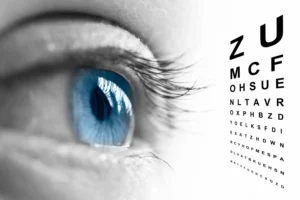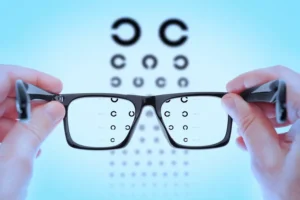The English language is rich and diverse, but it can also be a source of perplexity due to its many homophones—words that sound the same but have different meanings and spellings. One such common confusion exists between sight and site.
While these words may be pronounced identically, they serve entirely distinct purposes in the language. Understanding the difference between them is crucial for effective communication and accurate writing. In this discussion, we’ll explore the nuances of “sight” and “site” to help you navigate this frequently encountered linguistic dilemma.
Importance of using sight” and “site correctly in speech and writing

Using “sight” and “site” correctly in speech and writing is important because they are homophones, which means they sound the same but have different meanings and spellings. Using them incorrectly can lead to confusion and misunderstandings.
Here’s why it’s important to use them correctly:
- Clarity of Communication: Correct usage ensures that your message is clear and easily understood by your audience. Misusing these words can create confusion and hinder effective communication.
- Professionalism: Using the right word in the right context demonstrates your language proficiency and attention to detail. This is particularly important in professional and academic settings.
- Credibility: Proper language usage enhances your credibility. If you consistently use homophones correctly, it reflects positively on your writing and speech skills.
- Avoiding Embarrassment: Using the wrong word can lead to embarrassment, especially in formal situations or written documents where errors are more noticeable.
- Precision: Using “sight” and “site” correctly allows you to convey the intended meaning precisely. “Sight” relates to vision, while “site” refers to a location or place.
Here are the correct uses and meanings of each word:
- “Sight” refers to the ability to see or something that is seen. For example, “The beautiful sight of the sunset left me in awe.”
- “Site” refers to a specific location or place, especially in the context of construction, websites, or events. For example, “The construction site is on the outskirts of town,” or “I visited their website and found the information I needed.”
Usage of Sight and site in speech
In our daily conversations, choosing the right words is essential to convey our thoughts and ideas accurately. This is particularly true when dealing with homophones, words that sound the same but have different meanings and spellings.
Two such homophones are “sight” and “site.” In this guide, we will explore the correct usage of “sight” and “site” in spoken language, offering examples for each to help you master their proper usage. We will also discuss common mispronunciations and mistakes to help you avoid them in your speech.
How to use “sight” correctly in spoken language:
- “The view from the mountaintop is an incredible sight.”
- “I couldn’t believe my eyes when I saw the magnificent sight of the Grand Canyon.”
- “Her beautiful dress caught everyone’s sight at the party.”
- “The night sky was filled with the breathtaking sight of a meteor shower.”
Provide examples of how to use “site” correctly in spoken language:
- “The construction site for the new building is just down the street.”
- “We’ve selected a picturesque site for our family picnic.”
- “The archaeological site revealed ancient artifacts from centuries ago.”
- “This is the perfect site to set up our camp for the weekend.”
Discuss common mispronunciations or mistakes in speech:
- Mispronunciation: One common mistake is pronouncing “sight” as “site” or vice versa. To avoid this, remember that “sight” rhymes with “light,” and “site” rhymes with “right.” Proper pronunciation is key to differentiating them in speech.
- Contextual confusion: Sometimes, people may use the wrong word due to a lack of clarity in their own understanding. To avoid this, make sure you understand the context in which you’re using these words. “Sight” is about vision, while “site” refers to a location or place.
- Spelling confusion: Another common error is spelling “site” when you mean “sight” and vice versa. Double-check your spelling in written or typed communication to ensure you are using the correct word.
- Colloquial usage: In informal speech, some people may use these words interchangeably, but it’s still essential to be aware of the correct usage, especially in more formal or professional contexts.
By mastering the proper use of “sight” and “site” in spoken language and being mindful of common mispronunciations and mistakes, you can enhance your communication skills and ensure that your message is clear and accurate.
Usage of Sight and site in writing

Effective written communication requires a keen understanding of language nuances to avoid misunderstandings and misinterpretations. Among the many challenges in English, the correct usage of homophones like “sight” and “site” plays a pivotal role in ensuring clarity and precision in writing.
Below, we will explore the correct usage of “sight” and “site” in written sentences. We will also address common spelling errors and confusions that arise when distinguishing between these two words, helping you enhance the quality and accuracy of your writing.
How to Use “Sight” Correctly in Written Sentences
“Sight” refers to the sense of vision or something that is seen. To use “sight” correctly in written sentences, consider the following guidelines:
- Descriptive Clarity: Use “sight” when describing something visual. For instance, “The sight of the snow-capped mountains was breathtaking.”
- Metaphorical Use: “Sight” can also be used metaphorically to convey insight or perception. For example, “She had a keen sight for spotting hidden details.”
- Phrases and Idioms: “Sight” appears in common phrases and idioms like “out of sight,” “set one’s sights on,” or “a sight for sore eyes.” Utilize these expressions appropriately to add depth to your writing.
How to Use “Site” Correctly in Written Sentences:
“Site” refers to a specific location or place, often used in the context of construction, websites, or events. Here’s how to correctly use “site” in written sentences:
- Physical Locations: When referring to a physical location or place, use “site.” For instance, “The archaeological site contained ancient relics.”
- Construction and Development: In construction or development contexts, “site” is used. Example: “The construction site is buzzing with activity.”
- Web Context: When discussing websites or online platforms, such as “website,” “webpage,” or “online platform,” use “site.” For example, “Visit our site for the latest updates.”
Addressing Common Spelling Errors and Confusions:
To avoid common spelling errors and confusions between “sight” and “site,” keep the following in mind:
- Practice and Proofreading: Develop a habit of proofreading your writing for homophone errors. Careful editing can catch many of these mistakes.
- Contextual Awareness: Pay attention to the context in which you are using these words. “Sight” relates to vision, while “site” relates to location.
- Mnemonic Devices: Some find it helpful to use mnemonic devices or memory aids to remember the difference. For instance, “sight” has the letter “i” like “vision,” while “site” is related to a specific “location.”
By following these guidelines and remaining mindful of the distinctions between “sight” and “site,” you can elevate your writing, ensuring that your words are not only grammatically correct but also clear and effective in conveying your intended meaning.
Tips for Remembering the Difference between sight and site
The difference between “site” and “sight” is a common source of confusion in the English language. However, with a few memory aids and practice exercises, you can easily remember when to use each word correctly. Below is the strategies to help you distinguish between these two homophones effectively.
Memory Aids for “Site” and “Sight”:
To remember when to use “site” and “sight” correctly, consider the following memory aids:
- Visual Imagery: Picture the word “site” as a construction site with tools and builders, which relates to a physical location or place. In contrast, “sight” can be visualized as an eye or a pair of glasses, emphasizing the act of seeing.
- Sound Association: The word “site” sounds like “site,” as in “construction site.” This auditory connection can help you recall its meaning related to a location.
- Context Clues: Pay attention to the context of the sentence. If you are talking about a place, use “site.” If the context involves seeing or vision, choose “sight.”
Practice Exercises to Reinforce the Distinction:
- Fill in the Blank: Create sentences with blanks where you need to choose between “site” and “sight.” For example:
-
- She visited the archaeological ____ to explore ancient ruins.
- The breathtaking ____ of the sunset left everyone in awe.
- Word Association: List words or phrases that relate to “site” and “sight.” For “site,” think of words like location, construction, building. For “sight,” think of words like vision, eyes, glasses.
- Sentence Comparison: Write sentences that use both “site” and “sight” to emphasize the contrast between the two words:
-
- The historic ____ was a remarkable ____; tourists couldn’t believe their ____.
- Picture Associations: Find images or illustrations that represent “site” and “sight.” Create flashcards with these images and the corresponding word. Test yourself by matching the correct word to the image.
- Use Mnemonics: Create a mnemonic or acronym to remember the difference. For example, “Seeing Is Getting High On the Eiffel Tower” can help you recall that “sight” is related to vision, while “site” is associated with a specific location.
- Reading Practice: Read books, articles, or any written material that uses “site” and “sight” in context. The more you encounter these words in their proper usage, the easier it will be to remember when to use them.
By employing these memory aids and engaging in practice exercises, you can develop a strong understanding of when to use “site” and “sight” correctly in your writing and conversations. Over time, these words will become second nature, and you’ll no longer mix them up.
Common Phrases and Idioms

Common phrases and idioms are a fascinating aspect of language that often rely on metaphors and symbolism to convey meaning. In this guide, we’ll explore idiomatic expressions that involve “sight” or “site” and discuss how to recognize and use them correctly.
Understanding these idioms can enhance your comprehension of everyday language and improve your ability to communicate effectively.
Common Idiomatic Expressions with “Sight” or “Site”:
- A sight for sore eyes: This expression is used to describe something or someone that is very pleasant or comforting to see after a period of absence or difficulty. For example, “After a long day of work, her smiling face was a sight for sore eyes.”
- In plain sight: When something is in plain sight, it means it is easily visible or conspicuous, often implying that it’s hiding in plain view. For instance, “The missing keys were right there in plain sight on the kitchen counter.”
- At first sight: This phrase refers to an immediate or initial impression or experience when seeing someone or something for the first time. “It was love at first sight when they met.”
- Out of sight, out of mind: This idiom suggests that when something or someone is no longer visible or present, they are easily forgotten or cease to be a concern. “After moving away, her childhood friends were soon out of sight, out of mind.”
Recognizing and Using These Expressions Correctly:
- Context Matters: Pay attention to the context in which these idiomatic expressions are used. This can often provide clues to their meaning.
- Figurative vs. Literal Interpretation: Understand that these expressions are figurative and not to be taken literally. For example, “out of sight” doesn’t mean physically out of your vision; it means they are no longer present or relevant.
- Practice Makes Perfect: The more you encounter and use these expressions in everyday conversations or writing, the more comfortable you’ll become with them. Practice helps reinforce your understanding.
- Learn from Context: When you encounter an unfamiliar idiom, try to deduce its meaning based on the surrounding words and situation. In many cases, you can figure out the intended sense.
- Resources: Refer to idiom dictionaries or language resources that explain the meanings and origins of common idiomatic expressions. This can provide valuable insights into their usage.
By familiarizing yourself with these idiomatic expressions involving “sight” and “site,” you’ll be better equipped to understand and use them appropriately in various social and professional contexts. Idioms add depth and nuance to your language skills, making your communication more engaging and expressive.
Conclusion
Understanding the distinction between sight and site is a valuable skill that contributes to effective communication. “Sight” refers to the act of seeing or vision, while “site” pertains to a specific location or place. By utilizing memory aids, practicing through exercises, and being mindful of context, you can confidently use these words correctly in your everyday language.
Moreover, recognizing idiomatic expressions involving “sight” or “site” adds depth to your language skills, enhancing your ability to express ideas and understand the intricacies of common phrases and idioms. So, keep an eye on “sight” and place “site” in its proper context, and your language proficiency will continue to improve.

